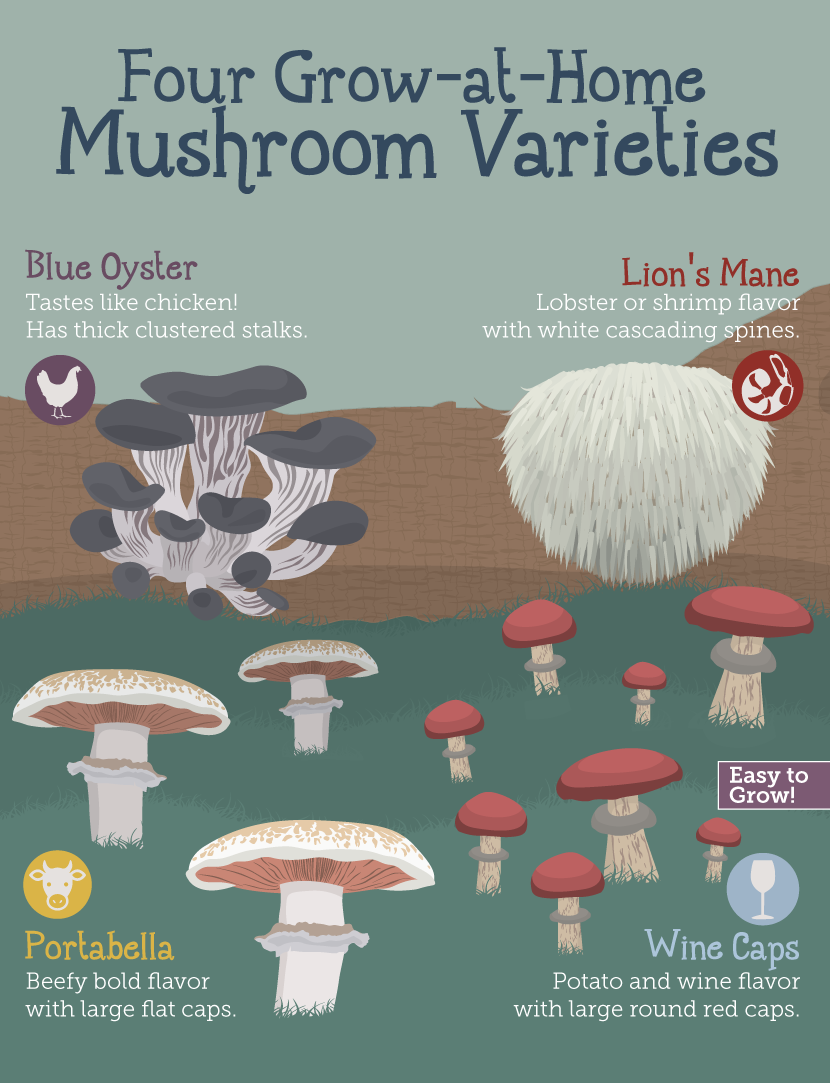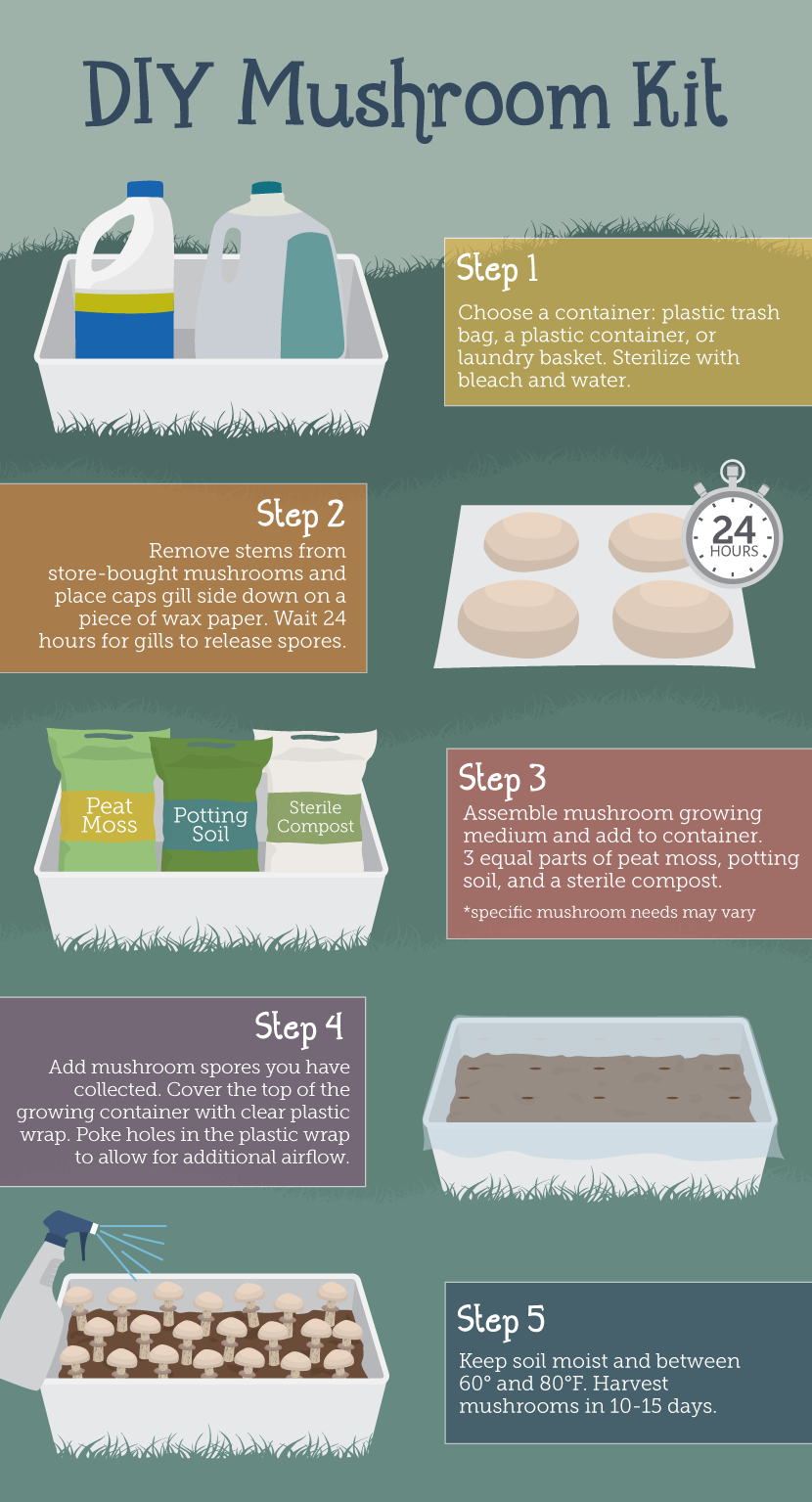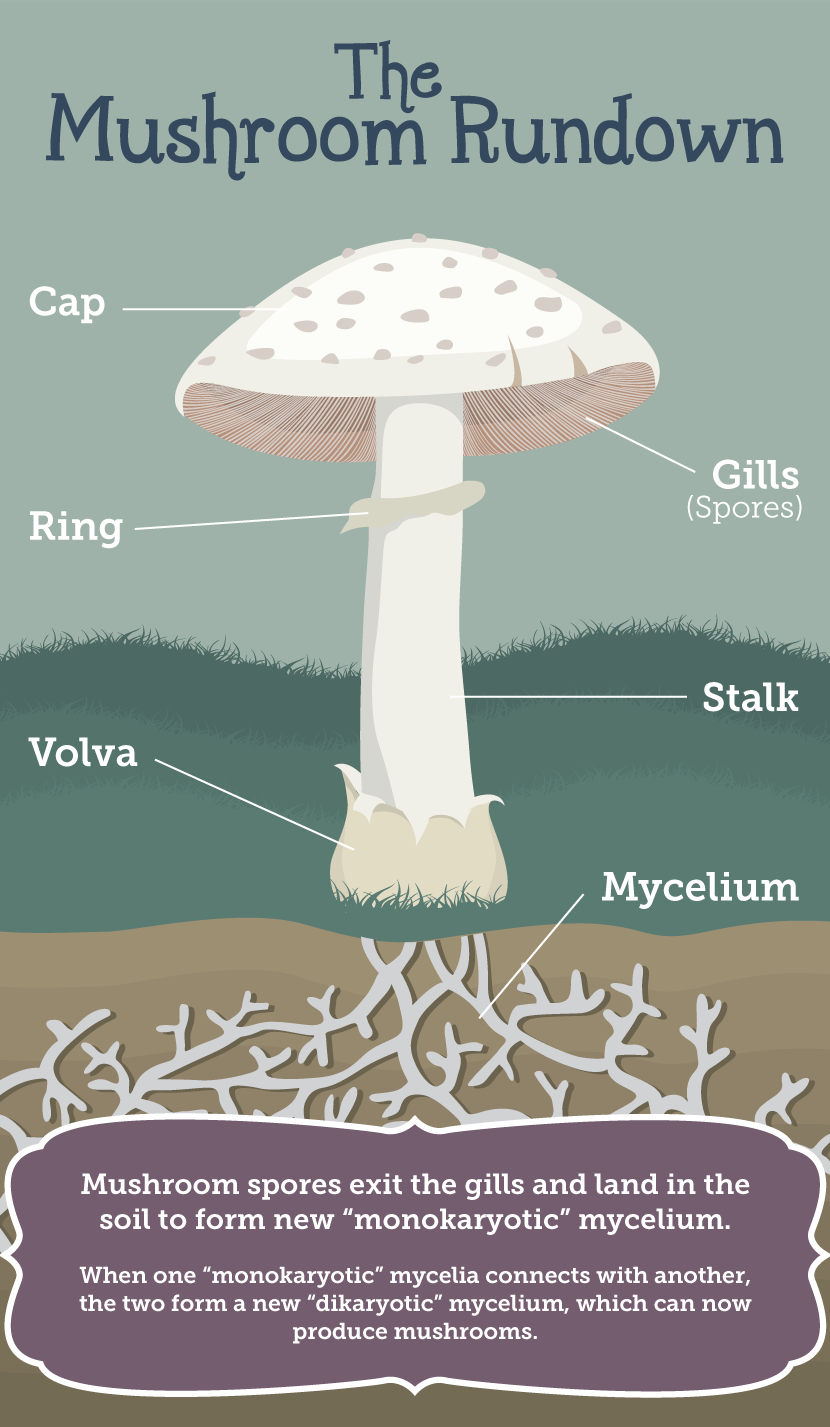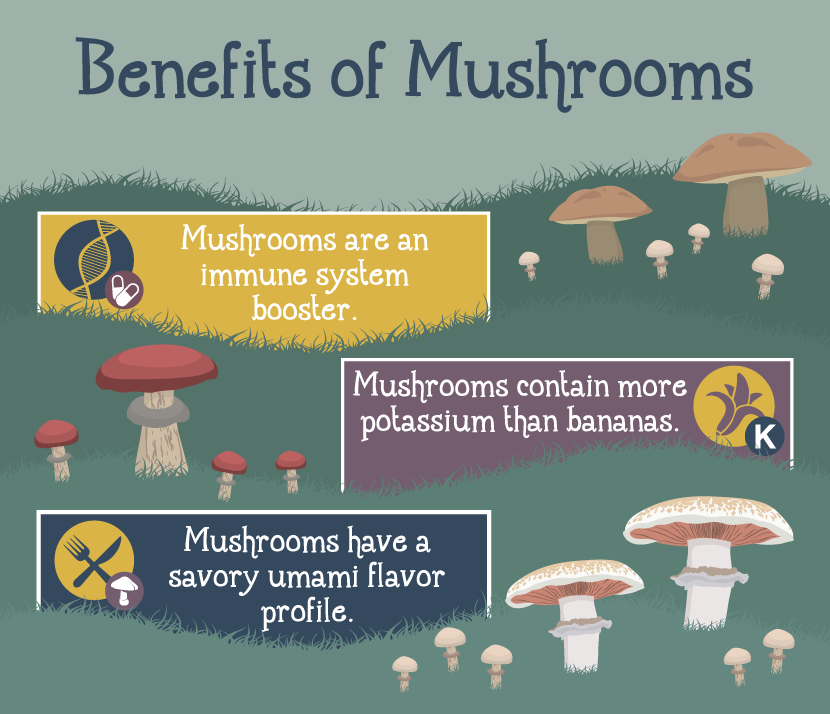Mushrooms are a hot topic now. They can immediately turn any humdrum meal into a culinary creation, and to top it all off, mushrooms are healthy! Amazingly, growing mushrooms at home is easy. You can grow your own by following a few simple steps.
Which Varieties To Plant?
The variety of mushrooms you can grow at home is surprising, and you can grow a plethora of them, so you might actually have to figure out how to use them all up. Portabella mushrooms are the delicious, meaty mushrooms you can order at restaurants – when you sink your teeth into them, they almost taste like steak. Growing your own portabellas is easy! Blue Oyster mushrooms, which many say taste like chicken, are a favorite, as are Lion’s Mane mushrooms, which have a light, delicate, seafood-like taste similar to scallops. Some consider Lion’s Mane mushrooms to be a “Foolproof Fungus”. You can’t mistake their white fuzzy appearance.
Last but not least on the list of easy mushrooms you can grow at home are Wine Caps, which are also a great beginner mushroom. Wine Caps are prized because you can grow them outside, and all you have to do is create a wood chip garden. This is their preferred growing medium. Gardeners who like to be out harvesting vegetables and working in flowerbeds prefer to start them outside. Wine Caps have a burgundy/reddish-brown wine color on their caps, which often fades to yellow. They have a unique potato and red wine flavor, which keeps mushroom lovers coming back for more!
Building Your Own Mushroom Kit
1. Obtain a suitable growing container for your mushroom-growing project – usually a plastic trash bag, a plastic container, or a laundry basket.
2. Sterilize the growing area as much as possible. Some use a bleach/spray mixture.
3. Put together a mushroom-growing medium. This should be three equal parts of peat moss, potting soil, and sterile compost. (This recipe can vary, so additional research may be required depending on the mushroom’s specific requirements.)
4. Cut stems off store-bought mushrooms, and place the mushroom caps gill-side-down on a piece of clean wax paper.
5. Wait 24 hours for the caps to release their spores, which you will replant when you are done. You may cover the caps with cups if you like, which can keep the delicate spores from blowing away.
6. Place soil in a small container and gently transfer the mushroom spores you collected to the container.
7. Cover the top of the growing container with clear plastic wrap. Poke eight to twelve holes in the plastic wrap to allow additional airflow. Use the growing instructions below to grow your mushrooms.
8. Mushrooms like it humid, so using a spray bottle, mist the soil with water often. Ideally, keep the mushroom kit between 55 and 60 degrees Fahrenheit, but every mushroom variety is a little different. In 10 to 15 days, you should be harvesting your own mushrooms!
NOTE: Make sure to note the date and variety of mushrooms.
History and Physiology
Other cultures have used mushrooms medicinally for many years. Some cultures, including the Egyptians, believed mushrooms provided a pathway to immortality and longevity. They even organized mushroom foraging parties because mushrooms were so precious to them. Mushrooms have also been preserved using dehydration for centuries; more recently, they have been preserved through canning, freezing, and pickling.
Mushroom physiology is fascinating. The cap is really designed to be a roof for the mushroom that keeps everything protected, including the gills, which are where the spores are produced. The ring is located on the stem, and it provides additional protection for the mushroom spores when the mushroom is young. The stem holds the cap and ensures that spores drop from high enough off the ground to be scattered by a breeze. Some mushrooms also have a volva, which is what is left if the veil breaks.
Last but not least, mushrooms have mycelium. This is the part of the mushroom you cannot see. Much like the roots of a tree, mycelium provide food for the fungus. They are long, thin, almost hair-like structures that are present under the surface of the soil. Mycelium are essential to the growth of the mushroom structure. Mushrooms release spores from the gills underneath the cap. The spores land in the soil and germinate into a monokaryotic mycelium. Monokaryotic means that the mycelium’s chromosomes are unpaired.
To make mushrooms and create a full-fledged organism, the mycelium joins up with another monokaryotic mycelium to become a dikaryotic mycelium. This mycelium can then produce mushrooms on the surface of the ground. Certain myceliuma have even been known to spread miles underground, popping up mushrooms over vast areas. In fact, mushrooms could be the largest organisms on the planet!
Benefits of Mushrooms
In addition to how easy it is, growing mushrooms has many other benefits. You’ll save money, have healthy ingredients for meals, and the number of gourmet dishes you can produce will increase. A recent article in The Daily Beast touted mushrooms as “magic for women” because they can help control blood sugar. Controlling blood sugar leads to weight stabilization, which is another major benefit of growing and consuming your own mushrooms.
Mushrooms also contain more potassium than bananas, and they are loaded with selenium, which fights free radicals. Scientists and inventors are still studying mushrooms to test their viability for a variety of uses, including using Blue Oyster mushrooms as insulation. Start growing your own mushrooms today to explore their benefits yourself.
Follow this link to learn how to grow your own mushrooms in straw bales.
H/T: Fix





